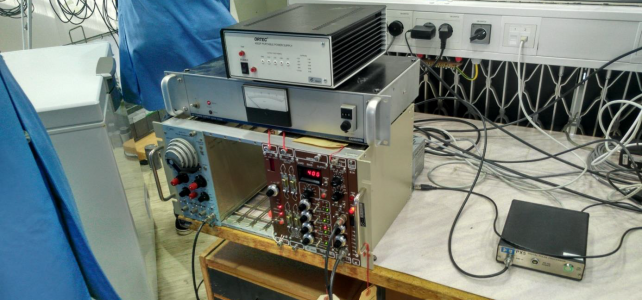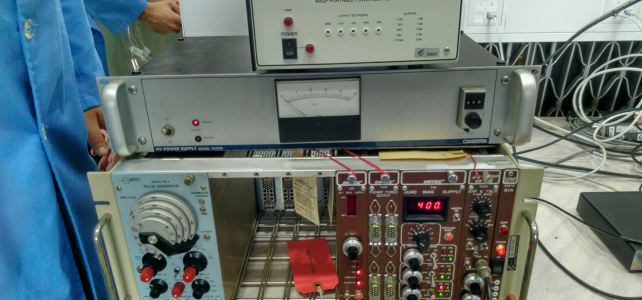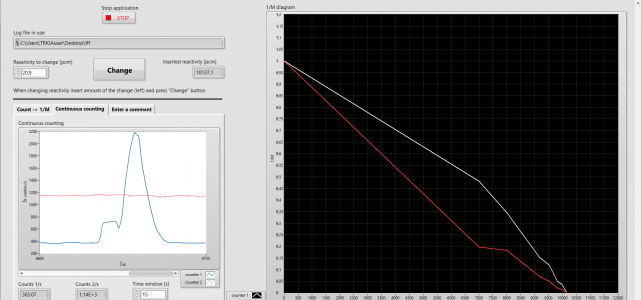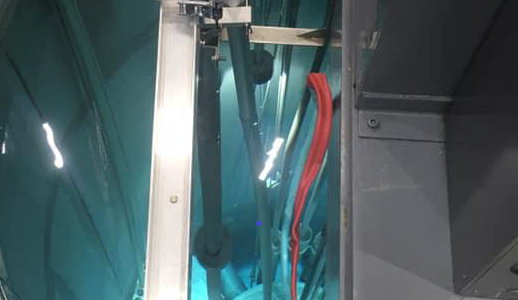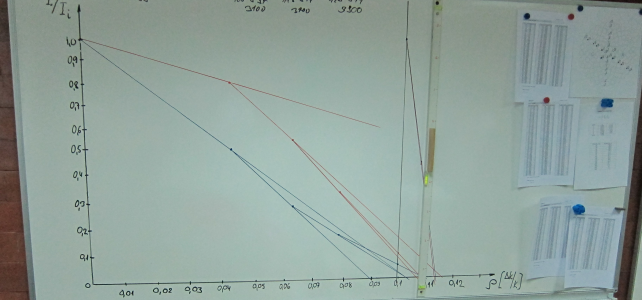Purpose of experiment
The critical experiment is one of the fundamental experiments in Reactor Physics. Its main purpose is to determine the critical number of fuel elements and / or control rod positions in a critical assembly. The experiment is regularly performed both at experimental and power reactors after each core modification. The purpose of the experiment is to demonstrate the procedure to reach criticality starting from a deeply subcritical state in a controlled sequence.
Outcome / What you will learn
-
become aware of the importance of the critical experiment
-
perform the critical experiment by control rod withdrawal and plotting of the M-1 diagram as a function of reactivity insertion
-
observe the transients present when approaching criticality and examine the validity of neutron kinetics models in subcritical state.
Execution
Students perform the critical experiment via gradual control rod withdrawal, measurement of the neutron signal on the starting channel and plotting the M-1 diagram. At every step, students estimate the critical control rod position by extrapolation. To experimentally confirm if the achieved state is subcritical, critical or supercritical, the neutron source is withdrawn from the reactor core following multiple steps, and the time dependence of the neutron source is monitored on line.

